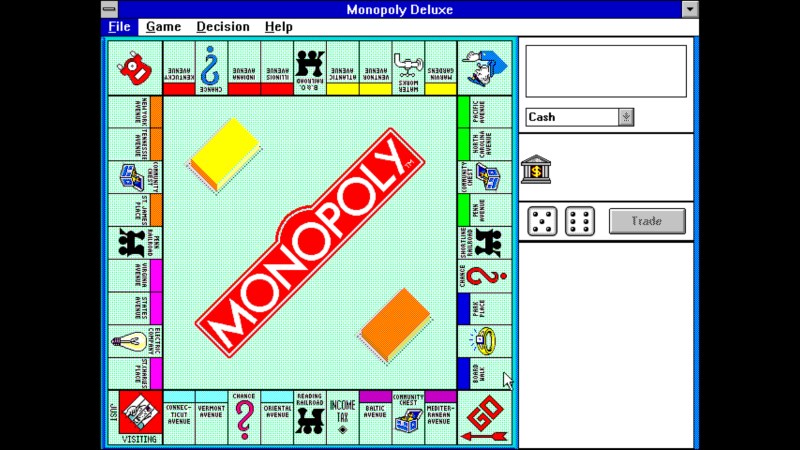

- Windows 3.1 in browser install#
- Windows 3.1 in browser drivers#
- Windows 3.1 in browser software#
- Windows 3.1 in browser code#
- Windows 3.1 in browser Pc#
Debuti wrote a comment on Maker Your Own Professional Bench Power Supply.Debuti liked Maker Your Own Professional Bench Power Supply.Mukesh Sankhla wrote a reply on Maker Your Own Professional Bench Power Supply.Mukesh Sankhla has updated the project titled Maker Your Own Professional Bench Power Supply.Elliot Williams on Hackaday Podcast 167: Deadly Art Projects, Robot Lock Pickers, LED Horticulture, And Good Samaritan Repairs.Alex99a on Super Tough Resin Is Literally As Tough As Nails.Ostracus on Screwed Up: Can Technology Be A Substitute For Regular Maintenance.Foldi-One on Super Tough Resin Is Literally As Tough As Nails.HaHa on Audio Eavesdropping Exploit Might Make That Clicky Keyboard Less Cool.HaHa on Screwed Up: Can Technology Be A Substitute For Regular Maintenance.then on ElectriPop Turns Cut Mylar Into Custom 3D Structures.paulvdh on Screwed Up: Can Technology Be A Substitute For Regular Maintenance.Healing Wounds With The Power Of Electricity 34 Comments
Windows 3.1 in browser drivers#
USB storage drivers and a mscdex that mounts ISOs However, for myself, I think I’d just want freeDOS or Novel DOS 7 filesystem with some kind of norton commander clone, and probably memtest. Anyhoo, apparently Trammiel got pissed at MS for lack of progress on shrinking and refining it and went with a version of GEM instead.Īlso back in the day, when you could browse most of the Be cool to turn those up, there’s a few BIOSes that are 2MB on a 4MB ROM etc, might squeeze that on.

They seemed to be disassembling the binaries to translate to 680×0 assembly and kludging it that way rather than from source, which was always rumoured to be a complete mess for the early windows versions.
Windows 3.1 in browser code#
MS Windows of some 3.x variety was apparently the original selected GUI for the Atari ST, intended to be running from ROM… however, MS couldn’t apparently get it to fit in less than a couple of megabytes, hex dumps of the code would show a hell of a lot of redundant x86 stuff in there, like references to hercules drivers and all manner of bloat that they couldn’t strip. Posted in classic hacks, computer hacks Tagged bios, coreboot, eeprom, firmware, libreboot, thinkpad, windows 3.1 Post navigation For whatever reason, these two legends of the computing world seem destined to keep running into each other. The last piece of the puzzle was messing around the zip and xz commands until the disk image was small enough to sneak onto the chip.īelieve it or not, this isn’t the first time we’ve seen Windows from this era running on a (relatively) modern ThinkPad.
Windows 3.1 in browser Pc#
wasn’t able to get the sound hardware working, but at least the PC speaker makes the occasional buzz. Just getting the display resolution up to 1024×768 (and still with only 256 colors) required patching the original video drivers with ones designed for VMWare. Of course, Windows 3.1 was not designed for modern hardware and no proper drivers exist for much of it. Especially given the fact most firmware replacements only fill a fraction of the X200’s 8 MB chip.
Windows 3.1 in browser software#
Once the somewhat finicky software and hardware environment was up and running, it seemed a waste not to utilize it further.
Windows 3.1 in browser install#
The adventure starts when helped a friend install libreboot and coreboot on a stack of old ThinkPads by using the Raspberry Pi as an SPI flasher, a pastime we’re no strangers to ourselves. It would take a little fiddling, plus the small matter of convincing the BIOS to see the EEPROM as a virtual floppy drive, but clearly those are all minor inconveniences for anyone mad enough to boot their hardware into a nearly 30 year old copy of Visual Basic for a laugh. A hacker by the name of thought that Microsoft’s latest and greatest circa 1992 might do well crammed into the free space remaining on a ThinkPad X200’s firmware EEPROM. After all, SkiFree sure ain’t gonna play itself.


But if you’re one of the people who looks back on these days fondly, you might wonder why we don’t see this tiny graphical operating system smashed into modern hardware. This was a simpler time, with smaller hard drives, lower resolution displays, and no hacker blogs for you to leave pessimistic comments on. It might be difficult for modern audiences to believe, but at one point Microsoft Windows fit on floppy disks.


 0 kommentar(er)
0 kommentar(er)
